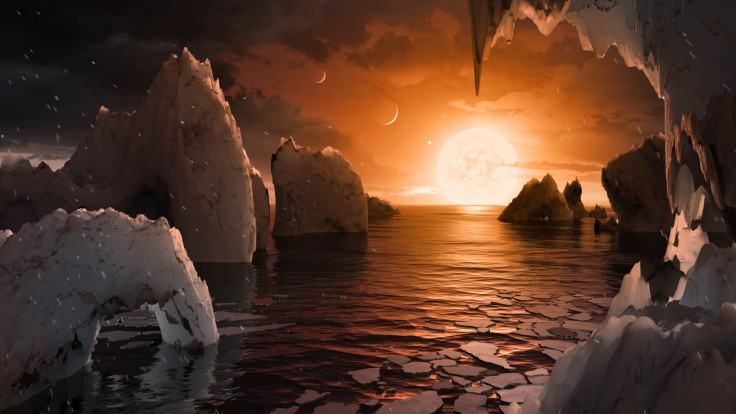Trappist-1 exoplanets and alien life: 5 things you need to know
Scientists find solar system 40 light years away with seven potentially habitable planets.
The Trappist-1 solar system has been found to host seven potentially habitable planets. Three of these are also located within the ultra-cool star's habitable zone, meaning they could have liquid water all over the surface – providing the tantalising prospect that life could have evolved there. The announcement was made at a Nasa press conference on 22 February, revealing the findings of the new study which was a multinational collaboration between top space scientists.
Here are five key findings about the solar system:
All seven are potentially habitable

All seven stars are a similar size to Earth and all are thought to be rocky. The star they orbit is far smaller and cooler than our Sun. This means, to have a surface temperature warm enough for liquid water, they need to be much closer than Earth is to the Sun. If the planets in Trappist-1 were in our solar system, they would all be closer to the star than Mercury is to the Sun.
Study author Michael Gillon said: "This is the first time so many planets of this kind are found around the same star. They form a very compact system – they are very close to each other and very close to the star - reminiscent of the moons around Jupiter. The star is so small and cold the seven planets are called temperate, meaning they could have some liquid water and maybe life by extension on the surface."
We will be able to find out if there is alien life within 10 years
Because of the type of star Trappist-1 is, scientists will be able to study the chemical composition and climate of the atmospheres of the planets using current technology. Amaury Triaud, another exoplanet expert, said: "The first stage we are doing is a reconnaissance stage to rule out the planets that have a large hydrogen envelope. This is to make sure they are indeed Earth-like.
"This will be followed by detailed observations to study the climate and eventually from the chemical formation to try to find out if there is life there. We can expect that within a few years we will know a lot more about these planets and we hope, if there is life there, maybe within a decade."
The three most likely planets to host life are Trappist-1e, f and g
These three planets are located in the 'Goldilocks zone', or the habitable zone. Researchers think that their location in the solar system is most likely to provide conditions right for liquid water to exist – in that it is neither too hot or too cold. For scientists, this is an important marker for potential for life because this is what we understand from our own planet and solar system.
However, further studies on their atmospheres will provide key information on whether or not they have the conditions right for life.
The view from the surface would be spectacular

Study author Amaury Triaud explained that if you were standing on the surface of Trappist-1f, the amount of light you would receive would be about 200 times less than what we get from the Sun: "Think of the light you see at the end of a sunset, brighter than the moon but dimmer than the sun. However, you would still feel warm because you still get energy from the star," he said.
"The spectacle would be beautiful because every now and again you would see another planet maybe twice as big as the moon in the sky – depending on which star you are on and which you are looking at. On 1f, the star has a diameter that is three times that of the sun seen in the sky. We had a debate about the colour. Originally we thought it would be extremely red like a deep crimson. But in the end the star is so red that most of its light is in the infrared, so we would see something more salmon coloured."
How confident could we be of the discovery of alien life
Gillon said that without actually going to the solar system and collecting samples of life, we could never be completely sure we had finally discovered we are not alone in the universe. However, we could come pretty close. He said certain combinations of molecules would give us 99% confidence of the discovery, but added: "To really be sure we are not missing something we must go there and check, but this is something we won't' be able to do for a long time. Apart from detecting a message from an intelligence outside the solar system, we will never be completely sure until we go there and get something."
© Copyright IBTimes 2025. All rights reserved.






















